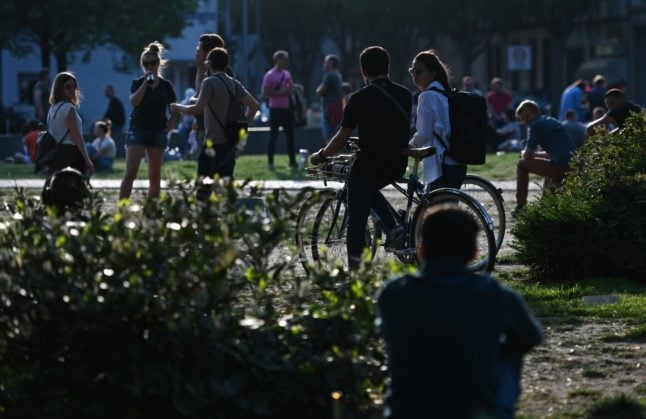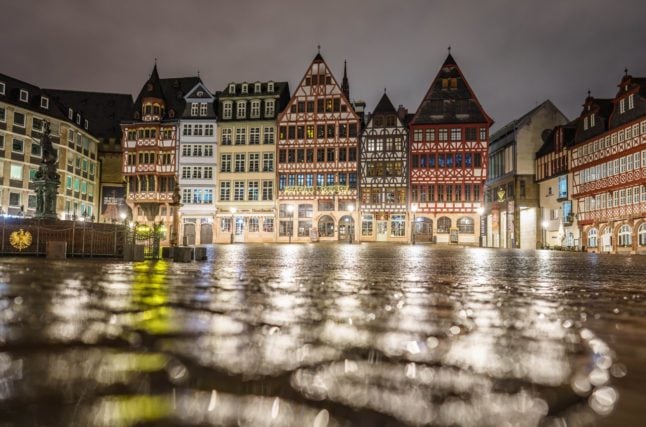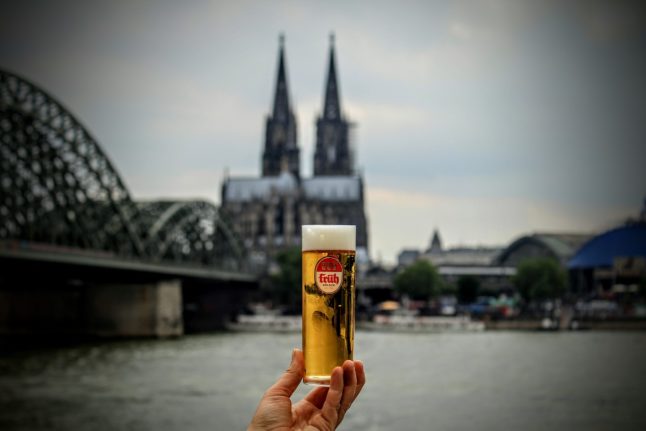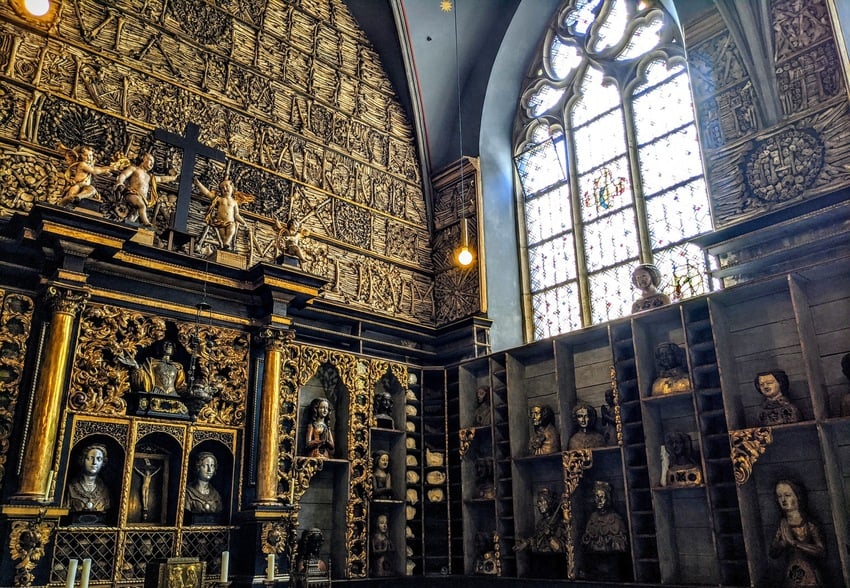All of Germany’s cities have something unique to offer, but it’s easy to see why Frankfurt is a draw to so many foreigners.
More than just the banking capital, Frankfurt is a hive of cultural and economic activity – and who wouldn’t want to live in the heart of Europe with easy access to so many other countries and cultures?
When you first moved there, you were likely bowled over by the city’s vibrant international feeling, high-end restaurants, awe-inspiring skyscrapers and ready availability of Apfelwein. But after living there a while, you may even end up strolling over the Eiserner Steg at sunset with barely more than a shrug.
So, to remind you why you fell in love with the city, here are some of the best things about living in Frankfurt that long-term residents may end up taking for granted.
1. The diversity of the city
Yes, Germany has a high proportion of foreigners, but not all cities in Germany have the same international feeling that Frankfurt does. That might well be because Frankfurt has one of the largest non-German populations in the country relative to its size.
And whether it’s a weekly Stammtisch for people new in the city, an array of restaurants with authentic cuisine from all over the world or the numerous multi-national companies that are based there, it’s easy to tap into this vibrant multi-cultural feeling at any time.
READ ALSO: Where do the majority of foreigners live in Frankfurt?
2. Unbeatable connectivity
Frankfurt offers more than enough to keep its residents entertained, but if you ever get itchy feet, there’s no better starting point to jet off for a relaxing weekend break.
With cities like Paris, Brussels, Zurich and Amsterdam all reachable within five hours by train, you don’t have to travel for long before you’re immersed in different sights, sounds and languages.
And with Frankfurt airport acting as one of the busiest transport hubs in the country, it’s also the ideal place to jet off on a long-haul flight to numerous international destinations.
READ ALSO: Five European cities you can reach in under five hours from Frankfurt
3. The romance of Hesse

Castles, medieval market towns, UNESCO world heritage sights and the Taunus mountains: what’s not to love about Hesse? In our humble opinion, this central German state is hugely underrated, and you may well forget to visit the endless chocolate-box villages and stunning landscapes that are right on your doorstep.
Less than an hour away from Frankfurt lies, for example, the charming little town of Limburg; a beautiful, well-preserved medieval town awash with ancient legends, meandering alleyways and half-timbered houses. Or you may want to awaken your sense of wonder with a trip to Felsenmeer – the ‘Rock Sea’ – a sprawling and tumbling rock formation believed to be hundreds of millions of years old.
READ ALSO: 9 of the best day trips from Frankfurt with the €49 ticket
4. The world’s largest book fair
Germany’s most famous author – Johann Wolfgang von Goethe – was born in Frankfurt way back in 1749, and you can still visit the home he grew up in today.
Almost 300 years later, however, there’s still an active creative and literary scene in Frankfurt waiting to be explored.
Every year in October, the world’s finest literary talent and the biggest names in publishing descend on the city for the Frankfurt Book Fair – the largest literary fair in the world. Alongside the sprawling exhibition floor, there’s a programme of readings, book signings and other events to keep bookworms thoroughly entertained.
Blink and you’ll miss it, because the event runs for just four days, but if you’re a Frankfurt resident it’s worth putting on your to-do list once at the very least.
5. Green spaces
One of the things that makes Frankfurt so liveable is the fact that you can escape the concrete jungle and buzz of the city at the drop of a hat, simply by visiting one of its numerous parks of forests.
With the sprawling, 5,000-hectare Stadtwald (city forest) to the south, there’s always a haven of green to escape to for nourishing bike rides and hikes that soothe your soul.
Munich may have it’s Englischer Garten and Berlin may have its Tierpark, but for Frankfurters, the Stadtwald is particular source of pride, as it happens to be the largest inner-city forest in the country.
6. Outdoor living
Frankfurt also has one of the most sunny and temperate climates in the country, and there’s nothing better than spending time in the city on a long, hazy summer day.

That may go some way to explaining why Frankfurters simply love to spend time outdoors – whether it’s sipping sparkling wine along the banks of the Main or enjoying one of the legendary parties or weekend markets at Friedberger Platz.
READ ALSO: ‘A megacity on a smaller scale’: An insiders’ guide to Frankfurt
7. Job opportunities
It’s no secret that Frankfurt is a major economic hub and the banking capital of Germany, which makes it a magnet for multi-national companies offering English-speaking jobs.
If you work in the right sector, there are numerous job opportunities to be had, and though the city is expensive to live in, many of them are well remunerated enough to make it worthwhile.
8. Apple wine
Hesse’s most famous tipple – Apfelwein – is easy to come by in Frankfurt, largely because the area surrounding the city is where the vast majority of it is produced.
Though this distinctive drink is an acquired taste, it’s part of the region’s rich culinary history, and once you’ve sampled it alongside a hearty Frankfurter Platte (Frankfurter platter) packed with grilled meats and cheese at one of Frankfurt’s historic taverns, we promise you’ll never go back.
READ ALSO: Apfelwein: 5 things you never knew about German apple wine
9. Awe-inspiring architecture
In many ways, Frankfurt’s wealth can be felt through the jaw-dropping feats of architecture peppered throughout the city – most notably the banking district with its iconic skyscrapers.
In fact, there are more skyscrapers in Frankfurt than anywhere else in Germany, many of which offer access to sky-high restaurants and viewing towers.

On the other end of the scale, however, many parts of Frankfurt maintain a true sense of history. Crossing the Eiserner Steg, you feel a true sense of the city’s industrial 19th century past, while strolling through the UNESCO-listed Dom-Römer Quarter will absorb you in the city’s medieval roots.
10. World-class cultural offerings
It’s easy to forget when you live there, but Frankfurt is home to world-class art and culture that’s often easy and affordable to enjoy.
Most famously, the Museumufer in Sachsenhausen is home to 39 different museums all dotted along the southern bank of the Main – including some of the best in the country.
Each year in August, these museums open their doors to visitors as part of the vibrant Museumsfest, with food stalls, music and activities for all the family to enjoy.
Beyond museums, Frankfurt is also home to an array of theatres – including the English Theatre and International Theatre – which host around 100 performances per week.
And if it’s music you’re into, you can find everything from small indie gigs to high-budget classical musical at the Frankfurt Opera House.






 Please whitelist us to continue reading.
Please whitelist us to continue reading.
Member comments